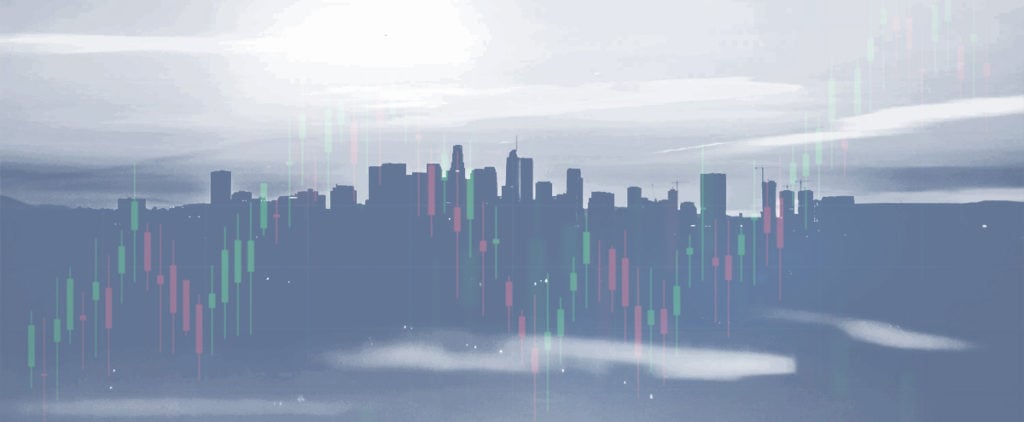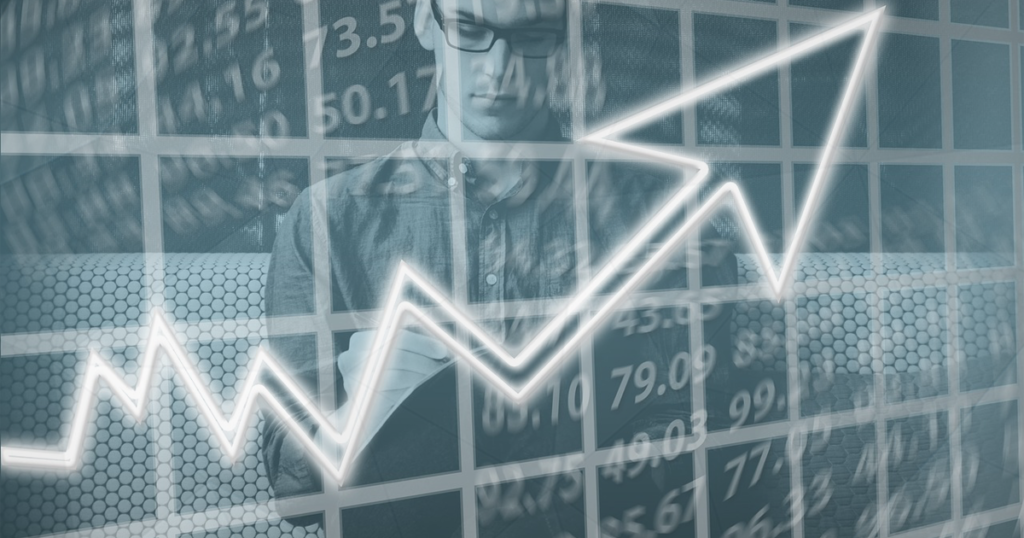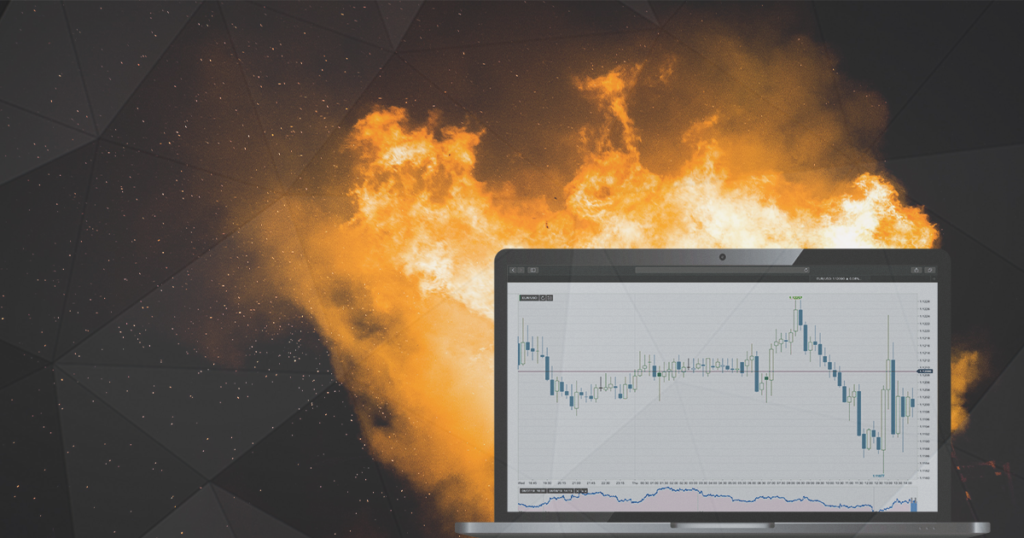Checklist: Top Leading, Lagging & Coincident Economic Indicators

Traders should be constantly looking for signs of whether and how current economic conditions change. Those signs are usually provided by economic indicators which are regularly reported and closely followed by traders and investors around the world.
Metaphorically, depending on whether economic reports look at the economy through the windshield of a car, the side window, or the rear view mirror, they can be grouped into leading, coincident, and lagging indicators.
I’ve provided a list of the top 19 economic indicators below.
Let’s go through them…
Leading Indicators: Looking Through the Windshield
Leading indicators are a group of economic indicators that are considered to lead overall economic activity, and can therefore be used to anticipate how future market conditions will look like. Despite their name, leading indicators are not always correct in their forecasting and should always be combined with other indicator groups or analytical disciplines when making investment decisions.
Here are the most important leading economic indicators:
1. New housing starts
The number of new residential buildings that began construction is a powerful leading indicator. It’s usually reported as an annualised number and adds new housing starts for the previous month.
The report is highly correlated with the Building Permits report because a permit must be issued before the start of construction.
New housing starts and the number of issued building permits are widely followed by traders as they produce a ripple effect in the economy, including new jobs for construction workers and a higher demand for other construction services that are needed in house building.
A housing report that comes in better than expected is considered good for the economy, while a decrease in the number of new housing starts can spark recession fears. It’s also important to note that this is a cyclical indicator, as there are more new housing starts during summer months than during winter months.
2. Central Bank policies
Central bank policies are arguably the most important leading indicator in the markets. Central banks hold regular monetary policy meetings (typically every quarter) where they assess the current economic conditions and adjust their monetary policies to stimulate the economy, ensure full employment, and keep prices stable.
Central bank meetings are widely followed as they provide valuable clues about how the central bank views the future of the economy. If they feel the economy needs additional stimulus, central banks will often turn to quantitative easing and rate cuts. Conversely, if the economy is doing well and inflationary pressures are building up, central banks will hike rates to cool down economic activity.
While trading central bank policies is not an easy task, unexpected changes often lead to significant volatility in the markets.
3. Bond yields
Bonds yields are often used as a leading indicator for the economy. Since bond prices and yields are inversely correlated, lower yields usually indicate higher demand for safe government bonds which signals that investors aren’t willing to take on risks in the market. Conversely, higher yields may signal lower bond prices as investors are more willing to invest in riskier assets, such as stocks for example.
4. Money supply
Another important leading indicator is the money supply. This is a slightly more complex indicator to track, as numerous factors may influence the current supply of money.
Nevertheless, more money in circulation usually signals that consumers may be more willing to spend and businesses may invest in new production facilities and business expansion, which is considered good for the economy.
5. Capacity utilisation
Capacity utilisation refers to the extent to which a company uses its installed machinery and productive capacity. This indicator can also be applied to entire countries, where a higher capacity utilisation usually translates into higher output and economic growth.
The optimal rate of capacity utilisation is around 85%, as it allows companies and countries to quickly respond to higher demand by using their remaining productive capacity. This is considered a leading indicator, as a higher rate of capacity utilisation usually means a higher rate of future production and higher employment levels.
6. Consumer confidence
Another important leading indicator is consumer confidence. While there are many indicators that measure confidence and sentiment levels, the Conference Board’s Consumer Confidence Index is arguably the most popular one.
The index is based on a survey of around 3,000 households that rate the current and future economic conditions, such as the availability of jobs, business conditions, and general economic situation.
When people are confident in their current and future financial standing, they usually tend to spend more, which in turn increases corporate profits and economic growth. Traders who want to trade consumer confidence levels can do so by comparing the actual reported level with market forecasts.
7. Commodity prices
In some cases, the price of commodities can be used as a leading economic indicator. Take oil for example: When oil prices are high relative to historical prices, this usually means that there is a higher demand for oil as economic conditions have improved.
However, high oil prices can also signal an overheating global economy, and businesses that rely on the price of oil (such as airlines, for example) might see their profit margins plunge. Conversely, low oil prices help businesses increase their profitability, which can lead to economic expansion.
8. Stock indices
Last but not least, stock indices can also be used as a leading indicator of the economy. When companies are doing well and earnings beat forecasts, stock markets usually rally.
However, the price of stocks and the value of stock indices also discount future economic conditions, as perceived by investors and other market participants. If they think that economic growth will persist, stocks will rise, and vice-versa. That’s why following the stock market could be a good idea to get a feeling of how the economy might perform in the future.
- Learn more, take our premium Trading for Beginners course: Learn How to Trade
Lagging Indicators: Looking Through the Rearview Mirror
Although lagging indicators usually “lag” current economic conditions, this doesn’t make them any less useful. Lagging indicators are often used to confirm that economic conditions have already changed (such as during economic recessions).
1. Unemployment rate
Labor market statistics are arguably the most important lagging indicator in the markets. The unemployment rate is a part of the labor market report and refers to the percentage of the total workforce that is unemployed but actively seeking employment.
Unemployment rates are usually reported on a monthly basis and markets pay attention to the difference between the actual number and the Street forecast. If the actual number misses expectations, the domestic currency and the equity markets usually fall. Conversely, if the actual number beats expectations (unemployment rate comes in lower than expected), the domestic currency and stock markets usually rally.
2. Average hourly earnings
The average hourly earnings are also a part of the labor market report. They refer to the price businesses pay for labor, with a higher number reflecting better economic conditions. In the United States, the Bureau of Labor Statistics releases all labor market numbers on a monthly basis, usually on the first Friday of the month.
An increase in average earnings can also be associated with lower unemployment rates, which in turn can lead to a gradual increase in prices as more money is chasing fewer goods and services.
When average hourly earnings come in better than expected, this is usually interpreted as good for the domestic markets.
3. Non-farm payrolls (NFP)
The non-farm payrolls, also known as NFP, is the most important piece of data related to labor market reports. The NFP is published by the US Bureau of Labor Statistics and refers to the change in the number of employed people during the previous month, excluding government jobs and the farming industry.
Just like other labor market reports, the NFP is usually considered a lagging indicator as it represents historical changes in employment levels.
Markets pay much attention to the NFP numbers. Traders stick to their trading platforms every first Friday of the month and wait for the NFP release at 13:30h GMT. Better-than-expected numbers usually cause enormous volatility in the markets and are considered good for the market.
Conversely, a large miss in the NFP can send shockwaves and increase expectations of a future rate cut by the central bank.
4. Corporate earnings
Another lagging indicator is corporate earnings. Most companies report their earnings on a quarterly basis and include a public display of profitability, financial standing, and official comments on recent business performance. Publicly traded companies in the US are required to file those quarterly reports, as well as annual reports, 10-Q, and 10-K reports.
Corporate earnings are considered a lagging indicator as they’re based on a company’s past performance. Lagging indicators such as corporate earnings are often used to confirm a new business cycle, such as an economic slowdown or an upcoming recession.
Coincident Indicators: Looking Through the Side Window
Coincident indicators are used to clarify the current state of the economy and to confirm the development or reversal of a business cycle. They’re considered to track the current economic activity more or less in real-time.
Here’s a list of the most important coincident indicators.
1. Personal spending
Personal spending, also known as consumer spending, is a major coincident indicator that refers to the inflation-adjusted value of all consumer expenditures. Consumer spending typically accounts for around 70% of a developed country’s GDP and it’s one of the most important measures of economic health.
In the US, the Consumer Spending report is released by the Bureau of Economic Analysis, about 30 days after the month ends. However, the impact of the report on the markets can sometimes be muted because the Retail Sales report is released about two weeks earlier.
2. Retail sales
Retail sales measure the change in the total value of sales at the consumer level. It’s released by the US Census Bureau, around 13 days after the month ends. Given its timely release, retail sales are considered a primary gauge of consumer spending and overall economic activity in the reported month.
When retail sales miss market expectations, markets tend to react quite turbulently as retail sales play an important role in future economic growth.
3. Gross Domestic Product (GDP)
The Gross Domestic Product report, also known as GDP, measures the change in the total value of all goods and services produced in a country during a specific period of time. The GDP report is the broadest measure of economic activity and an important coincident indicator.
Still, the GDP report tends to have a muted impact on the markets because there are more timely reports that can be used to anticipate economic activity.
4. Gross National Product (GNP)
The Gross National Product (GNP) is quite similar to the Gross Domestic Product, with the main difference that the GDP also takes into account the net income from foreign investments. Just like the GDP, the GNP is a widely-followed coincident indicator that provides a broad measure of current economic conditions and activity.
5. Industrial production
Industrial production is another coincident indicator that measures the change in the total inflation-adjusted value of output produced by industrial manufacturers. It’s an important indicator that reflects the current economic conditions because production quickly reacts to changes in the business cycle.
6. Consumer Price Index
The Consumer Price Index, also known as the CPI, measures the change in the price of goods and services at the retail level. It’s a major inflation report as consumer prices account for the majority of overall price increases over a period of time.
Traders focus on the CPI report because central banks closely follow price changes in the economy. An increase in inflation can lead to higher interest rates, while a decrease in inflation can lead to rate cuts due to the central bank’s mandate to keep prices stable.
7. Producer Price Index
The Producer Price Index, or PPI, is another major inflation report that tracks price changes of finished and intermediary goods and services purchased by producers. The PPI report is usually released one business day after the CPI report, which makes its impact on the markets somewhat muted. Nevertheless, traders pay attention to the PPI because an increase in the overall price level in the production process can sometimes lead to cost-push inflation.





